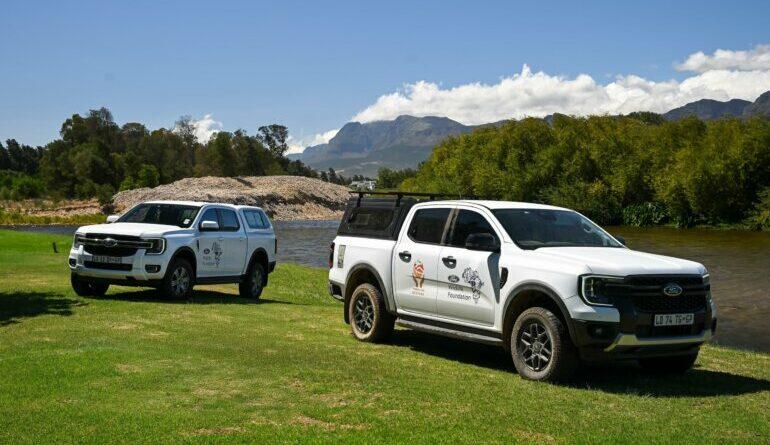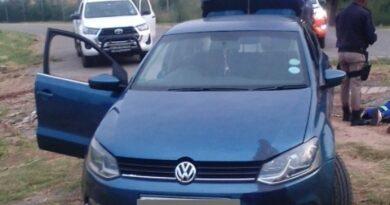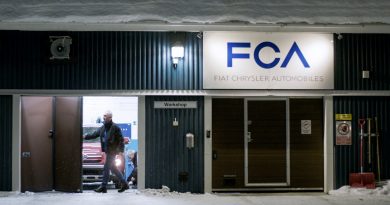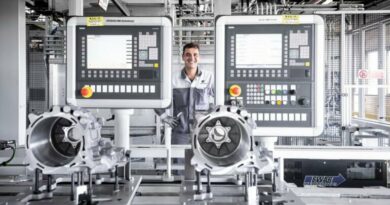Ford Wildlife Foundation Drives the Return of the Witvis to the Berg River
- After a 30-year absence, the Freshwater Research Centre, with support from the Ford Wildlife Foundation, is leading a pilot project to reintroduce the endangered Witvis to the Berg River.
- Ford Wildlife Foundation provides support through the use of a Ford Ranger Double Cab 4×4, enabling conservation teams to access remote locations and transport fish safely, reinforcing Ford’s long-standing dedication to wildlife conservation.
- The reintroduction follows a carefully monitored process, including rearing in a safe nursery, tagging individuals for tracking, and conducting ongoing scientific surveys to assess population recovery.
PRETORIA, SOUTH AFRICA, 02 April 2025 – The Witvis, also known as the Berg-Breede Whitefish (Cheilobarbus capensis), is an endemic species once abundant in the Berg and Breede Rivers in the Western Cape. Historically, it was one of the dominant large-fish species in the Berg River but faced significant threats, including being considered a pest by fishermen who actively removed them. By the 1990s, the Witvis had disappeared from the Berg River due to habitat degradation and predation by invasive species like bass. Now, after a 30-year absence, a dedicated project run by the Freshwater Research Centre, titled ‘Bringing Back the Witvis’, is underway with the support of the Ford Wildlife Foundation (FWF) and the Table Mountain Fund. It aims to reintroduce this endangered species and restore its presence in its natural ecosystem.
Led by Dr Jeremy Shelton, senior researcher at the Freshwater Research Centre, the Fynbos Fish Revival (FFR) project is focused on reintroducing the Witvis back into the Berg River – one of five FFR conservation projects working tirelessly to recover threatened species of Fynbos Fish. This is a pilot project, and one that Dr Shelton and his team are passionate about.
The Freshwater Research Centre has had a long association with the Ford Wildlife Foundation, and this new Witvis project, which forms part of the broader Fynbos Fish Revival initiative, expands the FWF’s far-reaching environmental conservation efforts. FWF provides the project team with a locally produced Ford Ranger Double Cab 4×4 for a period of two years, providing essential mobility for the staff to reach the often remote and challenging terrain that is typical of a project such as this.
“The Ford Wildlife Foundation is proud to support the Fynbos Fish Revival, an initiative dedicated to critical research, identifying conservation threats, and taking swift action to protect South Africa’s most endangered freshwater fish. Their work is essential in ensuring that river ecosystems remain healthy and full of the unique fish species endemic to the region. I am especially proud that the Ford Ranger plays a vital role in this initiative by not only transporting the team safely, but also delivering essential equipment and, most importantly, the fish to their new home in the Berg River,” says Lynda du Plessis, manager of the Ford Wildlife Foundation.
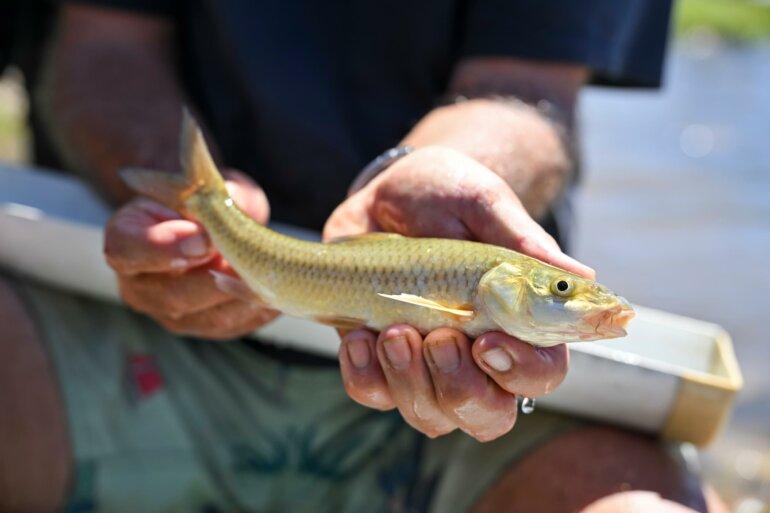
Pilot project
The starting point of the ‘Bringing Back the Witvis’ project was finding a safe space to breed Witivs. The team identified Bluegum Dam, set at the foot of the Simonsberg mountains in the Franschhoek valley on Babylonstoren Wine Estate as a safe nursery environment where the Witvis can grow and mature. Once they reach a suitable age these fish are reintroduced into the Berg River to help restore their population.
Collecting, transporting, tagging and releasing Witvis into the Berg River is no simple task. The Bluegum Dam has been populated with Witvis for well over a year, allowing them to grow to a size that makes them less attractive to prey and more likely to survive in their new river home. Multiple Fyke nets are set in the dam the evening prior to release to gather as many Witvis as possible. The fish are calmly and quietly removed from their temporary net residence and placed in large buckets filled with water. These buckets are fitted with air pumps to ensure the water has enough oxygen for the fish, and to prevent any unnecessary stress on the Witvis. These buckets are carefully loaded into the back of the FWF Ranger and transported to the Berg River, where the fish are then released.
Witvis thrive in environments like the Berg River, with theories suggesting they spawn in rocky areas or flowing sections during early to mid-summer. For the rest of the year, their preferred habitat is deeper pools within the river. As omnivores, they feed on invertebrates such as crabs and tadpoles, and possibly some smaller fish. Young Witvis tend to favour the calmer, sheltered areas along the riverbanks.
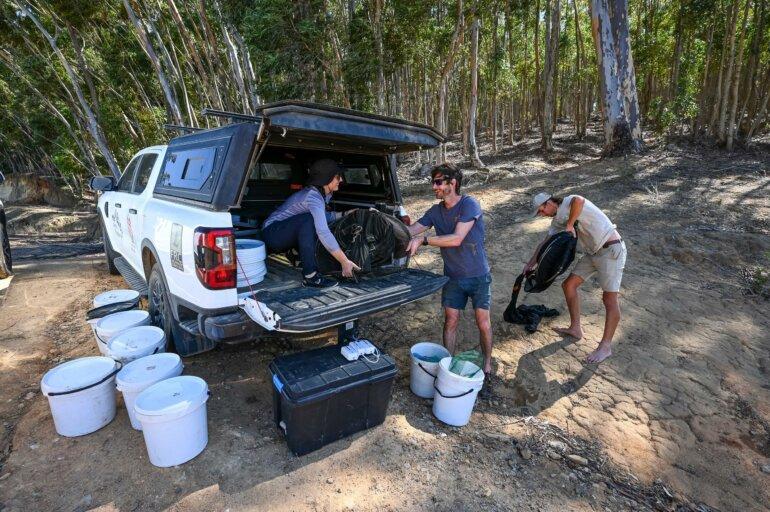
Counting fish in a bucket
The reintroduction of the Witvis is taking a phased approach, with the fish being released in batches. Each release has various sized Witvis, from the small younger fish to the larger and robust looking mature fish. The smaller fish are released into the river current as a group, while the mature fish that are candidates for tagging are measured to record size before being tagged.
Tracking the Witvis will inform the Freshwater Research Centre scientists of their habitat patterns and general health in the wild; how much will they grow per year and most importantly where will they be found, up or down the river. This information will help with further fish reintroduction projects.
To track the fish effectively, the team is tagging 15 to 20 percent of the released individuals with passive integrated transponder (PIT) tags that allow researchers to identify and monitor them in future surveys. By analysing the number of tagged fish recorded, along with their health and growth, these scientists will gain valuable insights into their survival rates and overall reintroduction success in the Berg River.
The section of the Berg River where the Witvis have been released is privately owned and was carefully selected for its ideal habitat, providing the necessary conditions for the fish to breed and thrive. While this serves as the primary release site, the goal is for the fish to naturally expand their range within the river over time.
The success of this pilot project is being measured through detailed scientific surveys of fish populations in the Berg River. The first survey took place in the summer of 2024, prior to any reintroductions, and will be followed by annual surveys for the next three years. These ongoing assessments will help determine whether the reintroduced fish are thriving and breeding in the ecosystem.
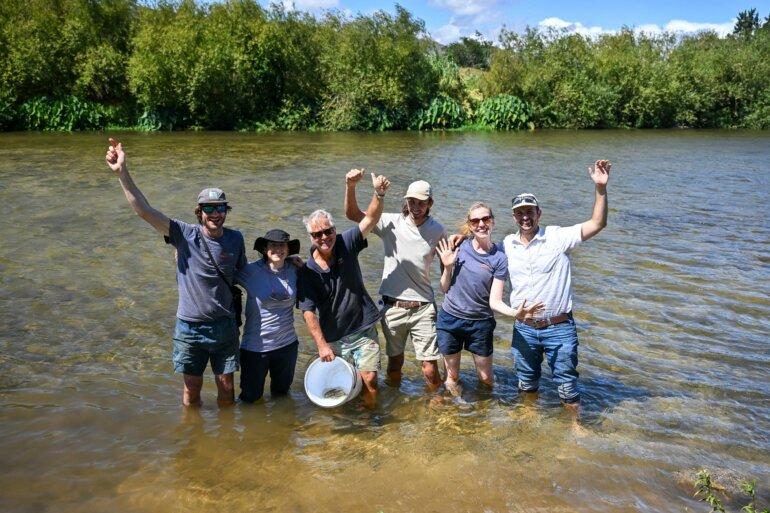
Ford Ranger powers conservation
A key aspect of the FWF’s initiatives involves the provision of locally manufactured Ford Ranger Double Cab 4x4s to support partner organisations. The vehicles are provided by Ford South Africa to partner organisations for a period of two years and are supported by Ford’s nationwide dealer network. They play a pivotal role in enhancing mobility for conservation, research and education projects operating located across the country.
For over 30 years, Ford Motor Company of Southern Africa (Manufacturing) (Pty) Ltd (Ford South Africa) has actively participated in wildlife and ecosystem conservation efforts in South Africa and Sub-Saharan Africa. The Ford Wildlife Foundation was established in 2014 and currently supports 28 projects across South Africa and one project in Mozambique. This comprises 17 conservation projects, seven research projects and five environmental education projects. For more information on the Ford Wildlife Foundation and its supported conservation projects, please click here: https://www.ford.co.za/about-ford/wildlife-foundation/

